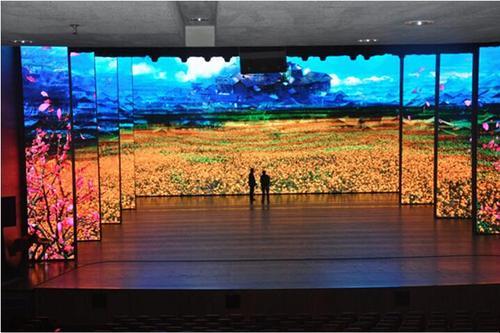A Comprehensive Analysis of Various Light Emitting Diode Display Wall Techniques and Their Uses
A Comprehensive Analysis of Various Light Emitting Diode Display Wall Techniques and Their Uses
Blog Article
LED video screens have become increasingly popular in various settings, such as music events, sports competitions, and business meetings. These large large displays are composed of many small LED modules which function collectively to form a cohesive unified visual. Various different types of LED video wall technologies available, every having its unique features and advantages. Grasping these technologies can help companies and organizations choose the appropriate option for their specific needs.
One common type of LED display wall technology is the directly viewed Light Emitting Diode. This solution utilizes individual LED modules which are placed near together to form a big display. Direct view Light Emitting Diode screens are known for their high luminosity as well as vibrant hues, making them perfect for outdoor events and well-lit lit environments. These displays also have a broad viewing perspective, which means that viewers can see the display clearly at various positions. This renders directly viewed LED walls a popular option for sports arenas and external events.
A different type of LED display screen solution is the LED-backlit LCD. Such solution combines traditional LCD displays and Light Emitting Diode illumination to enhance luminosity as well as color accuracy. LED illuminated Liquid Crystal Displays are commonly used in indoor settings, including shopping centers and conference spaces. These displays provide superior image quality while are typically more affordable than direct view LED walls. Nonetheless, they may often function as well in bright settings, since the illumination can sometimes wash out the colors.
Another thirdly choice is the OLED video wall. Organic Light Emitting Diode solution offers exceptional contrast and color depth compared to alternative kinds of screens. Every pixel in an OLED screen produces its own light, enabling for genuine blacks and vibrant colors. This renders Organic Light Emitting Diode display screens especially appealing for applications that demand premium images, including gallery galleries or high-end retail stores. However, OLED technology can be more expensive while may often be as bright as directly viewed Light Emitting Diode screens, rendering it not appropriate for external applications.
In addition to these options, various also various applications for Light Emitting Diode display screens. They can be used for promotion, amusement, and information display. For instance, businesses often use LED video walls for electronic advertising to draw in customers and advertise goods. Within amusement, they enhance the visual encounter at music events and events, providing lively backdrops as well as engaging visuals. Within business settings, LED display screens can be used for presentations, video meetings, as well as educational sessions, helping to communicate data in a visually attractive way.
In conclusion, LED display walls come in various types, each with its own benefits as well as applications. Direct view Light Emitting Diode screens are great for outdoor applications, while LED-backlit Liquid Crystal Displays are more appropriate for indoor settings. OLED here video walls offer exceptional visual clarity but may be at a greater cost. Grasping these differences can assist organizations make knowledgeable decisions about the best kind of Light Emitting Diode display screen most meets their needs, whether it be for advertising, entertainment, and corporate use.